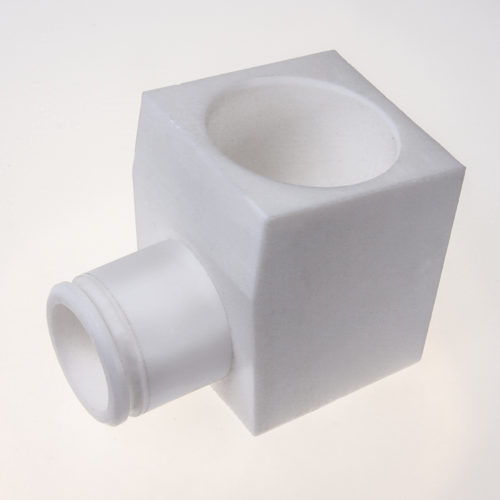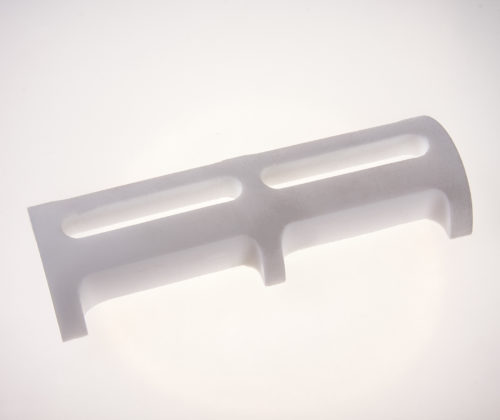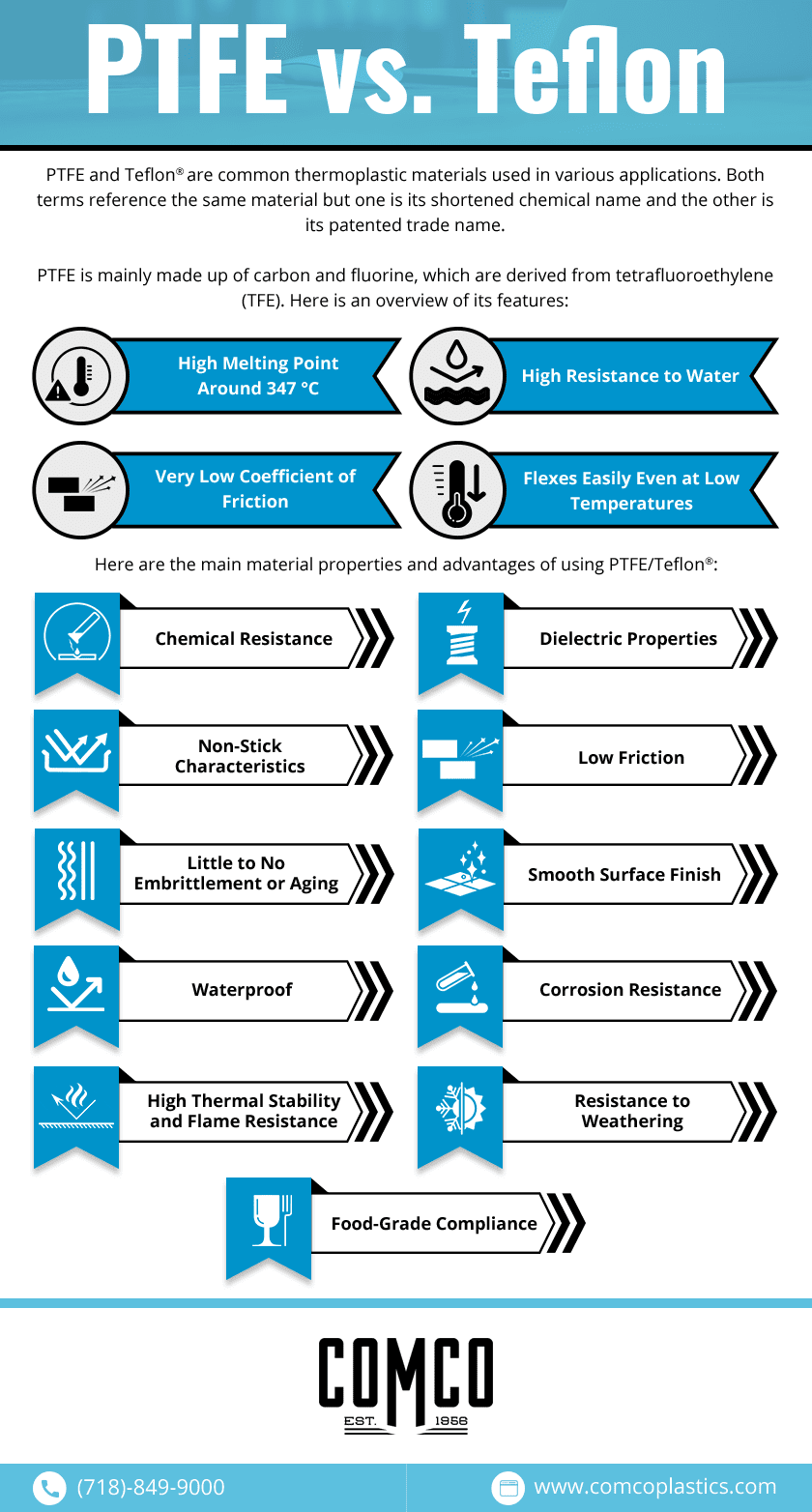PTFE and Teflon® are common thermoplastic materials used in various applications. Both terms reference the same material but one is its shortened chemical name and the other is its patented trade name. Continue reading to learn more about the features, advantages, and disadvantages of PTFE and Teflon®.
What Is the Difference Between PTFE and Teflon®?
Polytetrafluoroethylene (PTFE) is a tough, waxy, and nonflammable organic compound formed through the radical polymerization of tetrafluoroethylene. During polymerization, molecules of tetrafluoroethylene are passed through a radical initiator at a certain pressure and temperature to create polytetrafluoroethylene.
PTFE is mainly made up of carbon and fluorine, which are derived from tetrafluoroethylene (TFE). Here is an overview of its features:
- High melting point: around 347 °C
- High resistance to water
- Very low coefficient of friction
- Flexes easily even at low temperatures
These features make PTFE an excellent option for multiple applications, such as wire insulation, surface coatings for pipes carrying corrosive chemicals, and chemical processing equipment.
Teflon® is the trade name for synthetic polymer polytetrafluoroethylene (PTFE) and is mainly composed of carbon and fluorine. Teflon® was accidentally discovered in 1938 by Dr. Roy Plunkett, a scientist working at the DuPont Company. DuPont patented and trademarked Teflon® in 1945, and in 1960 the public began using the material in non-stick cookware.
PTFE and Teflon® are formed by similar monomers, tetrafluoroethylene, so the only difference between the two is their names. It is similar to how people tend to call facial tissues by the brand name Kleenex.
PTFE/Teflon® Advantages and Disadvantages
Here are the main material properties and advantages of using PTFE/Teflon®:
- Chemical resistance. PTFE has a unique ability to endure chemical corrosion for an extended period of time.
- Dielectric properties. PTFE offers good electrical resistance and dielectric strength, particularly at high radio frequencies.
- Non-stick characteristics. PTFE’s waxy surface is easy to clean and prevents materials from sticking to it.
- Low friction. The material’s coefficient of friction ranges from 0.05 to 0.10, one of the lowest coefficients of friction of any solid material.
- No embrittlement or aging. Unlike other coating materials, PTFE does not become brittle or age when exposed to certain environmental factors.
- Smooth surface finish. Thanks to its low coefficient of friction, PTFE leaves a smooth surface finish when applied as a coating.
- Waterproof. PTFE is resistant to liquids, including water.
- Corrosion resistance. PTFE has excellent chemical resistance, making it an ideal coating for containers or pipes holding highly corrosive chemicals.
- High thermal stability and flame resistance. Teflon®’s thermal properties include flame resistance and a high operating temperature range of -325 °F to +500 °F.
- Resistance to weathering. PTFE materials have a long shelf life, and they are not affected by harsh weather conditions or environmental contaminants.
- Food-grade compliance. Virgin PTFE has been certified by the FDA to contain materials that are not harmful when consumed by humans.
In some applications, using PTFE/Teflon® can be disadvantageous. Here are some drawbacks to keep in mind:
- Cannot change shape under pressure. PTFE cannot return to its original shape once installed and used.
- Unweldable. PTFE does not melt when heated and cannot be conventionally welded.
- Requires reinforcement. PTFE is soft, and to strengthen it, manufacturers must add other components like carbon fiber or glass.
- Inelasticity. PTFE is inelastic, which means that it is challenging to reshape and reuse it for multiple installations
- Not abrasion-resistant. PTFE material is prone to surface wear from rubbing, reducing its service life.
Applications 
Construction:
- Electrical insulator
- Gas line pipes
Food & Beverage:
- Non-stick pots and pans
- Cooking appliances
Chemical Processing & Manufacturing:
- Transportation containers
Automotive:
- Engine parts
- Vehicle exteriors
Medical:
- Medical devices
- Ligament replacements
Solar Panel Manufacturing
PTFE/Teflon® Components From COMCO Plastics
PTFE/Teflon®’s characteristics make it a versatile coating material for a variety of applications. Its mechanical properties and tensile strength allow it to withstand many types of challenging industrial conditions.
For over 60 years, COMCO Plastics has been manufacturing high-quality plastic components, including PTFE/Teflon®. Our technicians are experts at machining Teflon® and producing tight part tolerances consistent throughout high-volume production runs. Teflon® fabrication is one of our specialties, and our team can make custom Teflon®‘s plastic parts based on your unique specifications. Request a quote or contact us today to learn more about our services.


